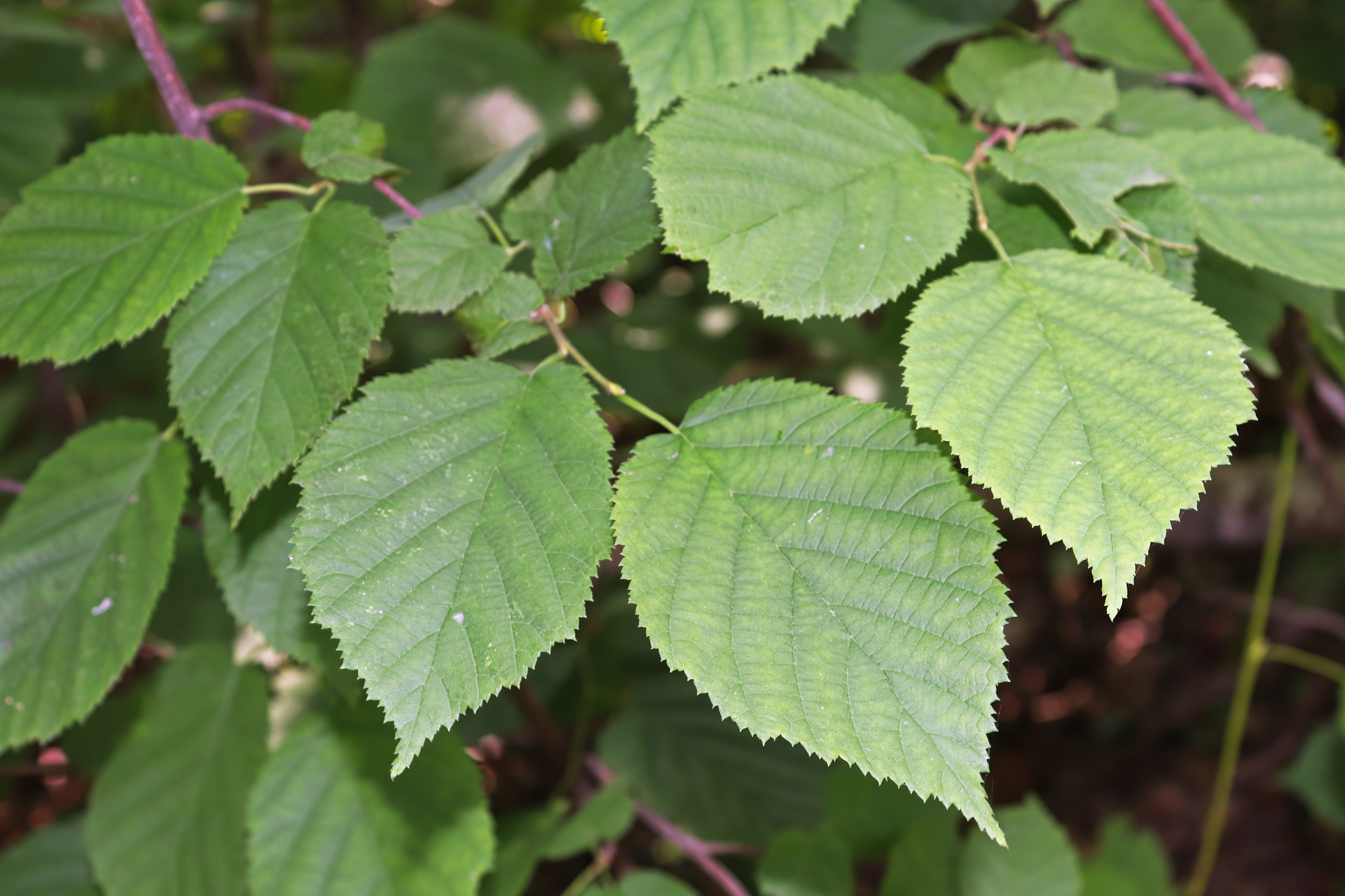Beaked Hazelnut
(Corylus cornuta)

Description
Corylus cornuta, the beaked hazelnut, is a deciduous shrubby hazel found in most of North America, from southern Canada south to Georgia and California. It grows in dry woodlands and forest edges and can reach 4–8 metres (13–26 ft) tall with stems 10–25 cm (4–9 3⁄4 in) thick with smooth gray bark.[1] The leaves are rounded oval, coarsely double-toothed, 5–11 cm (2–4 1⁄4 in) long and 3–8 cm (1 1⁄4–3 1⁄4 in) broad, with hairy undersides. The flowers are catkins that form in the fall and pollinate in the following spring. Corylus cornuta is named from its fruit, which is a nut enclosed in a husk with a tubular extension 2–4 cm (3⁄4–1 1⁄2 in) long that resembles a beak. Tiny filaments protrude from the husk and may stick into, and irritate, skin that contacts them. The spherical nuts, which are surrounded by a hard shell, are edible though small. The beaked hazel is the hardiest of all hazel species, at its northern limits surviving temperatures of −50 °C (−58 °F).
Taxonomic tree:







